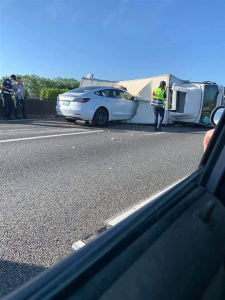The Core Autonomous Technology — Solid State LiDAR
Author: Neuvition, IncRelease time:2020-06-08 19:39:16
On the morning of June 1, 2020, a Tesla model3 autonomous driving crashed into a overturned truck on national highway 1 in Taiwan, China.
According to a preliminary investigation by the highway police department, Mr. Huang, the Tesla driver, said his Model 3 was on autopilot and traveling at about 110 kilometers per hour at the time of the crash.

As soon as he saw the truck, Mr. Huang said, he braked. But it was too late to stop now, and it hit the roof of the overturned lorry.
Aside from the accident itself, why is Tesla’s autopilot so prone to problems? let’s take a closer look at Tesla’s core technology.
Tesla currently uses binocular cameras do depth of technical solution, and the millimeter wave radar. In case of pure color of the object (white truck), binocular cameras and millimeter wave radar failure happened, which were unable to make real-time induction, this depth produced by the algorithm was not true. And might fail to work in a specific scenario, which cannot provide adequate security for autonomous driving.
To prevent the accident from happening again, the problem needs to be solved fundamentally. In any environment, only accurate measurement can guarantee the safety of autopilot. Currently rare technology could solve this problem in the market.
Neuvition Technology’s TITAN M1 1550nm solid state LiDAR uses the TOF principle and true three-dimension perception to obtain each actual point cloud data through laser time detection, which is real and reliable. In automatic driving, it can penetrate through thick fog and fog to detect the distance up to 140 meters effectively , making it an indispensable security equipment in autonomous driving.

Automatic driving will be widely promoted in the future, and the safety problem should not be underestimated. Neuvition Technology solid state LiDAR escorts automatic driving.